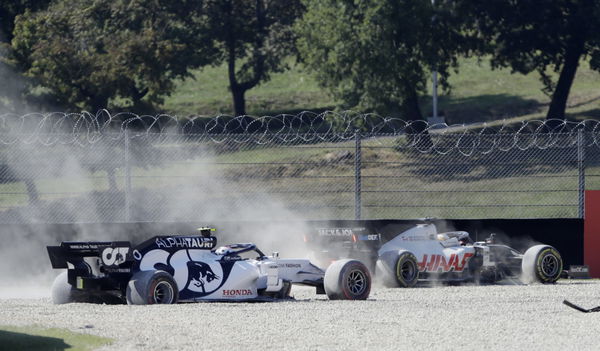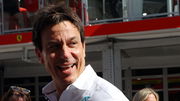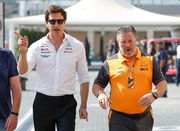
Reuters
Formula One F1 – Tuscan Grand Prix – Mugello, Scarperia e San Piero, Italy – Mercedes’ Lewis Hamilton during a press conference after winning the Tuscan Grand Prix FIA/Handout via REUTERS ATTENTION EDITORS – THIS IMAGE HAS BEEN SUPPLIED BY A THIRD PARTY. NO RESALES. NO ARCHIVES

Reuters
Formula One F1 – Tuscan Grand Prix – Mugello, Scarperia e San Piero, Italy – Mercedes’ Lewis Hamilton during a press conference after winning the Tuscan Grand Prix FIA/Handout via REUTERS ATTENTION EDITORS – THIS IMAGE HAS BEEN SUPPLIED BY A THIRD PARTY. NO RESALES. NO ARCHIVES
Although it was a very exciting race for different reasons, Lewis Hamilton believes that safety must not be compromised over the need for ‘show’. The Tuscan GP saw two incidents involving cars trapped together, and the damage was detrimental to some of them.
Watch What’s Trending Now!
The first incident saw Gasly and Verstappen knocked out into the gravel trap. While the second incident saw Sainz, Magnussen, Giovinazzi, and Latifi get a DNF from the race.

Reuters
Formula One F1 – Tuscan Grand Prix – Mugello, Scarperia e San Piero, Italy – AlphaTauri’s Pierre Gasly in the gravel trap after crashing out of the race Pool via REUTERS/Luca Bruno
It was particularly the second incident that was of major concern. And the 6-time World Champion believes the safety aspect ahead of the race restart needs to be reviewed for the future.
ADVERTISEMENT
In the post-race press conference, he was quoted as saying, “Ultimately, these races can get boring when everyone streams out and there’s such big gaps between everyone. So this does bring it back it in.
“But they definitely need to take into account the safety aspect because today wasn’t particularly safe with the restart. I could almost see that coming. I’m sure they will learn from it and we will move together, the sport together.”
ADVERTISEMENT
Lewis Hamilton suggests a different approach from NASCAR rules
The Mercedes cars were not directly at fault for either incidents at Mugello. But much like Hamilton, teammate Bottas echoed the fact that FIA only allows the lead car to start racing from the control line.
ADVERTISEMENT
As a result, the governing body needs to ensure that the show and excitement do not eclipse drivers’ safety. Hamilton believes that the same happens in NASCAR, but things should change for the better in F1.
He stated, “They do it in NASCAR. They put out the yellow flag all the time and safety cars, whatever, all the time to keep the race exciting.”
Top Stories
F1 Teams Protest as Toto Wolff’s Mercedes Given Clean Chit Over ‘Illegal’ Engine

Max Verstappen’s Siblings: Everything We Know About Victoria, Blue Jaye, Jason Jaxx, and Mila Faye

“Not Speaking to Anyone” – ‘Broken’ Lewis Hamilton Cuts All Ties With F1 World After Humiliating Season

Who Are Lando Norris’s Parents? Meet Adam Norris and Cisca Wauman

Zak Brown & McLaren Possibly in Deep Trouble as Mercedes Cuts Engine Supply for F1 2026

The safety car’s lights turning off late means the time and space for the race leader to set the tone is insufficient. Especially at Mugello, where there is an unusually long gap between the safety car exit line and the control line.
ADVERTISEMENT
ADVERTISEMENT
ADVERTISEMENT
ADVERTISEMENT

